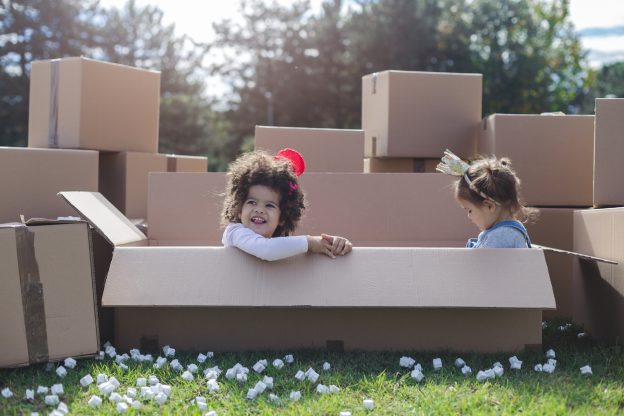
Parenting, Therapy Tips 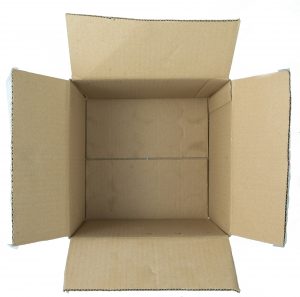 Have you ever noticed that your kids always seem more interested in the packaging a toy came in than the toy itself? Well, run with it! Collect five to ten large boxes from the recycling and use whatever markers or paint you have around the house to decorate them like buildings in a town. Create a library, school, post office, grocery store, doctor’s office, etc., and let kiddos run their town. If you like, use cars or dolls or stuffed animals to populate your town.
Have you ever noticed that your kids always seem more interested in the packaging a toy came in than the toy itself? Well, run with it! Collect five to ten large boxes from the recycling and use whatever markers or paint you have around the house to decorate them like buildings in a town. Create a library, school, post office, grocery store, doctor’s office, etc., and let kiddos run their town. If you like, use cars or dolls or stuffed animals to populate your town.
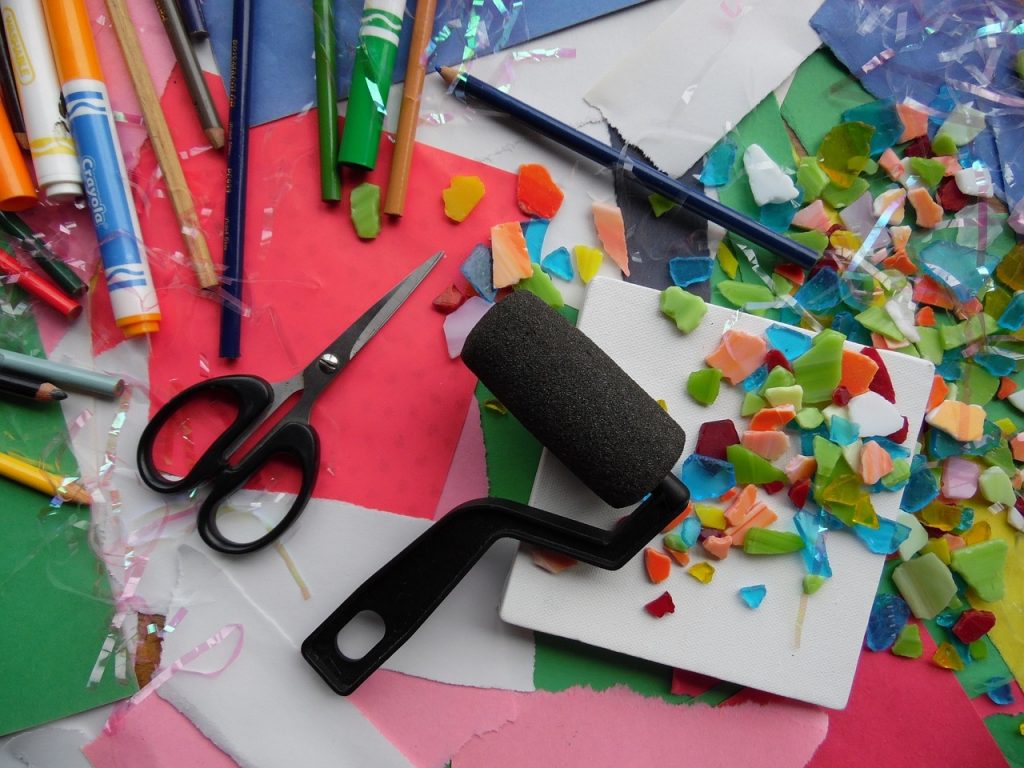 Children have great imaginations that can lead to some pretty fabulous creative expression. An old paper towel roll, toilet paper roll, or paper cup can serve as a base to make a person, animal, or mystical creature. Add cotton balls, puff balls, feathers, tissue paper, and Popsicle sticks to create features and other sensory touch points. Googly eye are always a great addition, but feel free to use a hole puncher as well. You can even use what you have in your recycling bin right now to make a fun craft.
Children have great imaginations that can lead to some pretty fabulous creative expression. An old paper towel roll, toilet paper roll, or paper cup can serve as a base to make a person, animal, or mystical creature. Add cotton balls, puff balls, feathers, tissue paper, and Popsicle sticks to create features and other sensory touch points. Googly eye are always a great addition, but feel free to use a hole puncher as well. You can even use what you have in your recycling bin right now to make a fun craft.
 An empty cardboard egg carton can act as a mini planter for an indoor garden. Seeds can be purchased for less than $1, and dirt can be collected from your backyard. Taking care of a plant is a great opportunity for children to learn about the life cycle and practice empathy skills they will use throughout life. Planting and gardening can also be a great sensory experience. Getting outside and digging in dirt offers a chance to feel the dirt in your hands, smell the scents of the outdoors, and enjoy the breeze on your skin. Create your own sensory garden with a variety of aromatic plants.
An empty cardboard egg carton can act as a mini planter for an indoor garden. Seeds can be purchased for less than $1, and dirt can be collected from your backyard. Taking care of a plant is a great opportunity for children to learn about the life cycle and practice empathy skills they will use throughout life. Planting and gardening can also be a great sensory experience. Getting outside and digging in dirt offers a chance to feel the dirt in your hands, smell the scents of the outdoors, and enjoy the breeze on your skin. Create your own sensory garden with a variety of aromatic plants.
 • Sensory Bin: Fill a plastic bin with dry pasta noodles, rice, pipe cleaners, cotton balls, beans, and small toys and let your child dig through it.
• Sensory Bin: Fill a plastic bin with dry pasta noodles, rice, pipe cleaners, cotton balls, beans, and small toys and let your child dig through it.
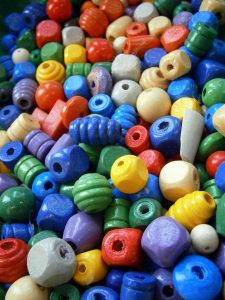 • Sensory Bag: Fill a Ziploc bag with hair gel or aloe vera, and small objects like beads or marbles that can be manipulated from outside of bag. Use duct tape to adhere bag to a flat surface for more stability.
• Sensory Bottle: Fill a clear plastic bottle with water, soap, and glitter. Add pebbles, shells, or beads for more color and dimension. Spin the bottle around to create a tornado for your kiddo to watch and explore, or roll it across the floor to add gross motor movement to activity.
• Sensory Tray: Fill a plastic tray or cookie sheet with shaving cream, whipped cream, or sand. Add color and texture with food coloring, glitter, beads, or puff balls.
• Sensory Bag: Fill a Ziploc bag with hair gel or aloe vera, and small objects like beads or marbles that can be manipulated from outside of bag. Use duct tape to adhere bag to a flat surface for more stability.
• Sensory Bottle: Fill a clear plastic bottle with water, soap, and glitter. Add pebbles, shells, or beads for more color and dimension. Spin the bottle around to create a tornado for your kiddo to watch and explore, or roll it across the floor to add gross motor movement to activity.
• Sensory Tray: Fill a plastic tray or cookie sheet with shaving cream, whipped cream, or sand. Add color and texture with food coloring, glitter, beads, or puff balls.
 At home, we can learn about butterflies through pretend play. Crawl on the floor for the caterpillar stage and gradually slow down to represent the caterpillar getting plumper and plumper. Once you have slowed to a stop, use a blanket to wrap your child in a ‘cocoon.’ Lay on the floor or couch in the cocoon for thirty seconds to a minute to represent the time spent in this stage. Finally, roll out of the cocoon and pretend to fly around the room. Have colorful scarves and clothing available to dress up as a beautiful butterfly once your child has emerged from the cocoon.
At home, we can learn about butterflies through pretend play. Crawl on the floor for the caterpillar stage and gradually slow down to represent the caterpillar getting plumper and plumper. Once you have slowed to a stop, use a blanket to wrap your child in a ‘cocoon.’ Lay on the floor or couch in the cocoon for thirty seconds to a minute to represent the time spent in this stage. Finally, roll out of the cocoon and pretend to fly around the room. Have colorful scarves and clothing available to dress up as a beautiful butterfly once your child has emerged from the cocoon.
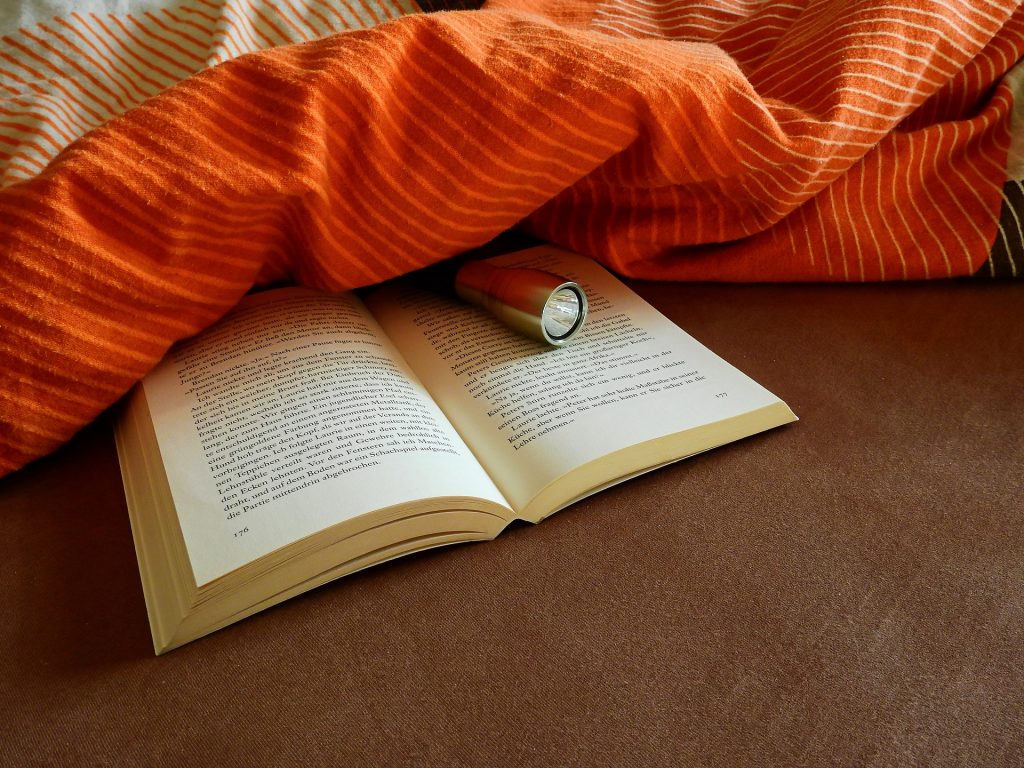 Good old-fashioned fort-building is fun for the whole family and doesn’t cost a dime! Expand on the experience by designating an evening of fort-building with sleeping bags, pillows, cushions, blankets, flashlights, and books or music.
Next time you are at the store thinking about spending money on the hottest new tech toy or an expensive program, remember that you and your child have all the play skills and materials you need. Use your expertise and imagination to enrich activities you can set up for little or no cost.
Good old-fashioned fort-building is fun for the whole family and doesn’t cost a dime! Expand on the experience by designating an evening of fort-building with sleeping bags, pillows, cushions, blankets, flashlights, and books or music.
Next time you are at the store thinking about spending money on the hottest new tech toy or an expensive program, remember that you and your child have all the play skills and materials you need. Use your expertise and imagination to enrich activities you can set up for little or no cost.
7 Low-Cost Ways to Create Developmentally Valuable Play
We’ve all heard the phrase, “It’s priceless.” When we play with our children, it’s priceless. When we watch them move with joy, it’s priceless. When we laugh with them, it’s priceless. While play, joy, and laughter are priceless, parents know that paying for toys can be costly. But enriching, joyful, and inclusive play doesn't have to be a financial burden. Even if you don't have access to a Lekotek toy lending library, you can create a world of developmental play with a little ingenuity, imagination, and some common household items. As experts in inclusive and accessible play, Lekotek knows the importance of play in a child’s development and a family's overall quality of life. Here are seven easy and inexpensive ideas from Lekotek inclusive play specialists for creating developmentally valuable play experiences that are accessible to children of all abilities.1. Box Town
Social development Have you ever noticed that your kids always seem more interested in the packaging a toy came in than the toy itself? Well, run with it! Collect five to ten large boxes from the recycling and use whatever markers or paint you have around the house to decorate them like buildings in a town. Create a library, school, post office, grocery store, doctor’s office, etc., and let kiddos run their town. If you like, use cars or dolls or stuffed animals to populate your town.
Have you ever noticed that your kids always seem more interested in the packaging a toy came in than the toy itself? Well, run with it! Collect five to ten large boxes from the recycling and use whatever markers or paint you have around the house to decorate them like buildings in a town. Create a library, school, post office, grocery store, doctor’s office, etc., and let kiddos run their town. If you like, use cars or dolls or stuffed animals to populate your town.
2. Mix and Match Crafts
Cognitive development Children have great imaginations that can lead to some pretty fabulous creative expression. An old paper towel roll, toilet paper roll, or paper cup can serve as a base to make a person, animal, or mystical creature. Add cotton balls, puff balls, feathers, tissue paper, and Popsicle sticks to create features and other sensory touch points. Googly eye are always a great addition, but feel free to use a hole puncher as well. You can even use what you have in your recycling bin right now to make a fun craft.
Children have great imaginations that can lead to some pretty fabulous creative expression. An old paper towel roll, toilet paper roll, or paper cup can serve as a base to make a person, animal, or mystical creature. Add cotton balls, puff balls, feathers, tissue paper, and Popsicle sticks to create features and other sensory touch points. Googly eye are always a great addition, but feel free to use a hole puncher as well. You can even use what you have in your recycling bin right now to make a fun craft.
3. Plant and Play
Emotional development An empty cardboard egg carton can act as a mini planter for an indoor garden. Seeds can be purchased for less than $1, and dirt can be collected from your backyard. Taking care of a plant is a great opportunity for children to learn about the life cycle and practice empathy skills they will use throughout life. Planting and gardening can also be a great sensory experience. Getting outside and digging in dirt offers a chance to feel the dirt in your hands, smell the scents of the outdoors, and enjoy the breeze on your skin. Create your own sensory garden with a variety of aromatic plants.
An empty cardboard egg carton can act as a mini planter for an indoor garden. Seeds can be purchased for less than $1, and dirt can be collected from your backyard. Taking care of a plant is a great opportunity for children to learn about the life cycle and practice empathy skills they will use throughout life. Planting and gardening can also be a great sensory experience. Getting outside and digging in dirt offers a chance to feel the dirt in your hands, smell the scents of the outdoors, and enjoy the breeze on your skin. Create your own sensory garden with a variety of aromatic plants.
4. Sensory Showdown
Sensory development Sensory has become a recognizable buzzword in the special needs community. Professionals and parents understand how important sensory experiences are for the kiddos in our lives, but this is often a developmental area that gets overlooked. Sensory issues are magnified in children with sensory processing disorder or autism spectrum disorders, but remember that all children (and adults) have specific sensory preferences that can motivate or irritate them in play. Be aware of your child’s particular preferences (including lighting, temperature, noise, and movement) when setting up activities like the following: • Sensory Bin: Fill a plastic bin with dry pasta noodles, rice, pipe cleaners, cotton balls, beans, and small toys and let your child dig through it.
• Sensory Bin: Fill a plastic bin with dry pasta noodles, rice, pipe cleaners, cotton balls, beans, and small toys and let your child dig through it.
 • Sensory Bag: Fill a Ziploc bag with hair gel or aloe vera, and small objects like beads or marbles that can be manipulated from outside of bag. Use duct tape to adhere bag to a flat surface for more stability.
• Sensory Bottle: Fill a clear plastic bottle with water, soap, and glitter. Add pebbles, shells, or beads for more color and dimension. Spin the bottle around to create a tornado for your kiddo to watch and explore, or roll it across the floor to add gross motor movement to activity.
• Sensory Tray: Fill a plastic tray or cookie sheet with shaving cream, whipped cream, or sand. Add color and texture with food coloring, glitter, beads, or puff balls.
• Sensory Bag: Fill a Ziploc bag with hair gel or aloe vera, and small objects like beads or marbles that can be manipulated from outside of bag. Use duct tape to adhere bag to a flat surface for more stability.
• Sensory Bottle: Fill a clear plastic bottle with water, soap, and glitter. Add pebbles, shells, or beads for more color and dimension. Spin the bottle around to create a tornado for your kiddo to watch and explore, or roll it across the floor to add gross motor movement to activity.
• Sensory Tray: Fill a plastic tray or cookie sheet with shaving cream, whipped cream, or sand. Add color and texture with food coloring, glitter, beads, or puff balls.
5. Talk About a Scavenger Hunt
Communicative development When I think of a scavenger hunt from my childhood, I always picture door-to-door collection from neighbors, but you can create a great scavenger hunt without leaving your home (or even one room). Write clues and riddles for the family to follow. For example, “This is a place where you brush your teeth” or “Look under your parents' bed.” Hide more clues or a little knick knack at each location.6. Becoming a Butterfly
Physical development At home, we can learn about butterflies through pretend play. Crawl on the floor for the caterpillar stage and gradually slow down to represent the caterpillar getting plumper and plumper. Once you have slowed to a stop, use a blanket to wrap your child in a ‘cocoon.’ Lay on the floor or couch in the cocoon for thirty seconds to a minute to represent the time spent in this stage. Finally, roll out of the cocoon and pretend to fly around the room. Have colorful scarves and clothing available to dress up as a beautiful butterfly once your child has emerged from the cocoon.
At home, we can learn about butterflies through pretend play. Crawl on the floor for the caterpillar stage and gradually slow down to represent the caterpillar getting plumper and plumper. Once you have slowed to a stop, use a blanket to wrap your child in a ‘cocoon.’ Lay on the floor or couch in the cocoon for thirty seconds to a minute to represent the time spent in this stage. Finally, roll out of the cocoon and pretend to fly around the room. Have colorful scarves and clothing available to dress up as a beautiful butterfly once your child has emerged from the cocoon.
7. Family ‘Fort’ Night
Social development Good old-fashioned fort-building is fun for the whole family and doesn’t cost a dime! Expand on the experience by designating an evening of fort-building with sleeping bags, pillows, cushions, blankets, flashlights, and books or music.
Next time you are at the store thinking about spending money on the hottest new tech toy or an expensive program, remember that you and your child have all the play skills and materials you need. Use your expertise and imagination to enrich activities you can set up for little or no cost.
Good old-fashioned fort-building is fun for the whole family and doesn’t cost a dime! Expand on the experience by designating an evening of fort-building with sleeping bags, pillows, cushions, blankets, flashlights, and books or music.
Next time you are at the store thinking about spending money on the hottest new tech toy or an expensive program, remember that you and your child have all the play skills and materials you need. Use your expertise and imagination to enrich activities you can set up for little or no cost. 


